La Mama Theatre Tour
La Mama
The Biggest Little Theatre in Australia
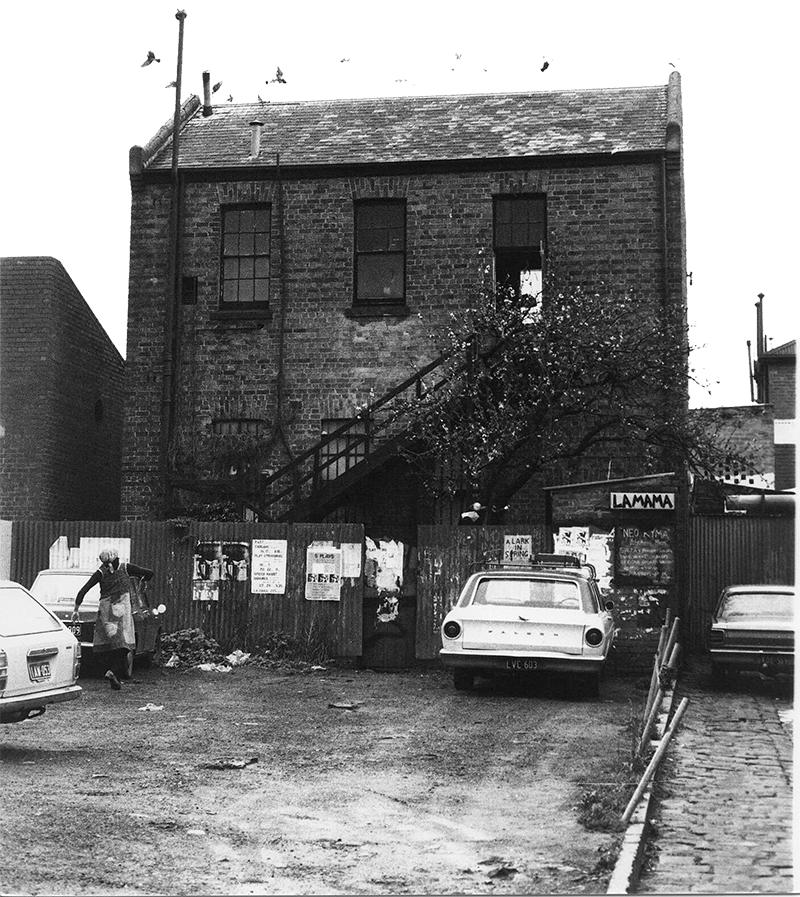
Theatre and Dance Platform, La Mama Collection
Imagine a crisp spring evening in late September 1977. La Mama Theatre in Carlton is celebrating its 10th birthday with a mini festival of notable productions. Tonight is a revival with the original cast of David Williamson's brutal suburban comedy The Removalists.
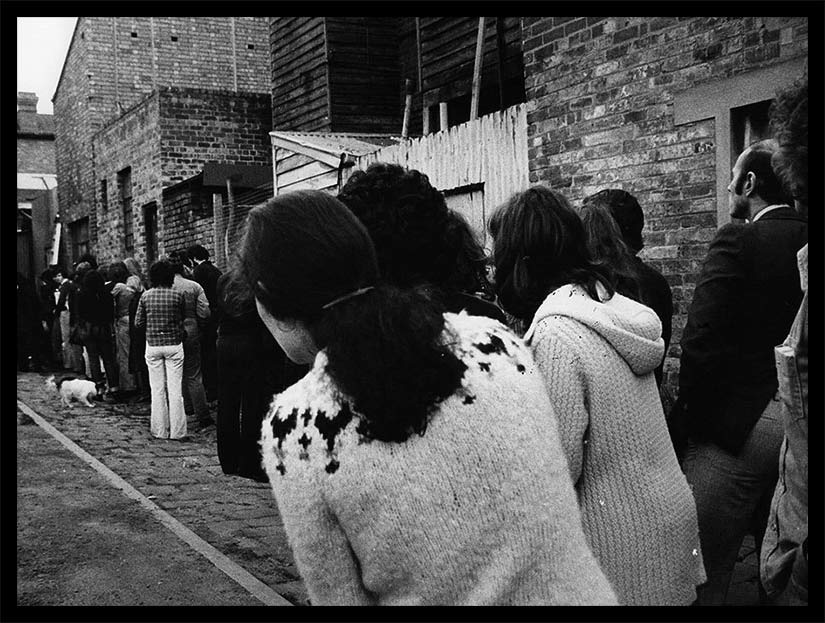
Theatre and Dance Platform, La Mama Collection
The queue for tickets spills out onto Faraday Street. It's only five years since its premiere, also at La Mama, but already the play is regarded as an Australian classic. Nearly a hundred punters are waiting in line, although the theatre only seats fifty. Those at the back of the queue are looking concerned.
The lights go down and there they are. Peter Cummins as the brutal old policeman and William Gluth as the young deputy just out of training college.
La Mama Theatre, located on Faraday Street in Carlton, has been a generative hub for the production of new plays, ensemble performances and diverse cultural activities for more than fifty years.
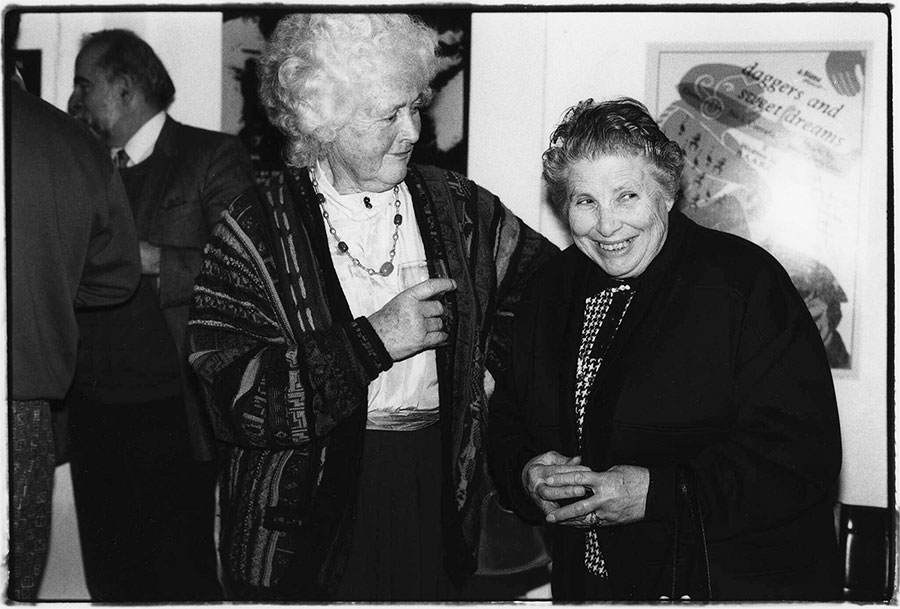
Photo: Tony Figallo Theatre and Dance Platform
La Mama Theatre was founded in 1967 by Betty Burstall (1926-2013) on the site of a former printer’s workshop in a building owned by the Del Monaco family.
Inspired by the downtown scene in New York, and their venue called La Mama, Burstall envisioned Melbourne’s La Mama as a place for all kinds of dramatic performance, from controversial happenings to music concerts and poetry readings.
In 1976, Liz Jones took over as artistic director and she gave renewed emphasis to La Mama's role in nurturing emerging theatre makers.
Relations with the Del Monaco family remained cordial over the decades and in 2007, after the death of Rose Del Monaco, the company was able to purchase the property.
Jack Charles discusses seeing and making new work at La Mama in the early days and the venue's unique open-door policy.
La Mama is famous for its unique posters which continue to be stuck up on walls and coffee shops and pubs across Carlton and the inner city. Many of these original art works are held in the University of Melbourne Archives.
Many performers have spoken about the distinctiveness of making work at La Mama with all its constraints of size and technology, but what makes La Mama an important and unique space?
Many of Australia’s significant playwrights as well as hundreds of well-known actors, directors and designers have worked at La Mama, attracted by the flexible open door policy of the company. A random sample of the many individuals who have worked there in various capacities since the 1970s include David Williamson, Cate Blanchett, Jack Hibberd, John Romeril, Clem Gorman, Graeme Blundell, Judith Lucy, Julia Zemiro, Jack Charles.

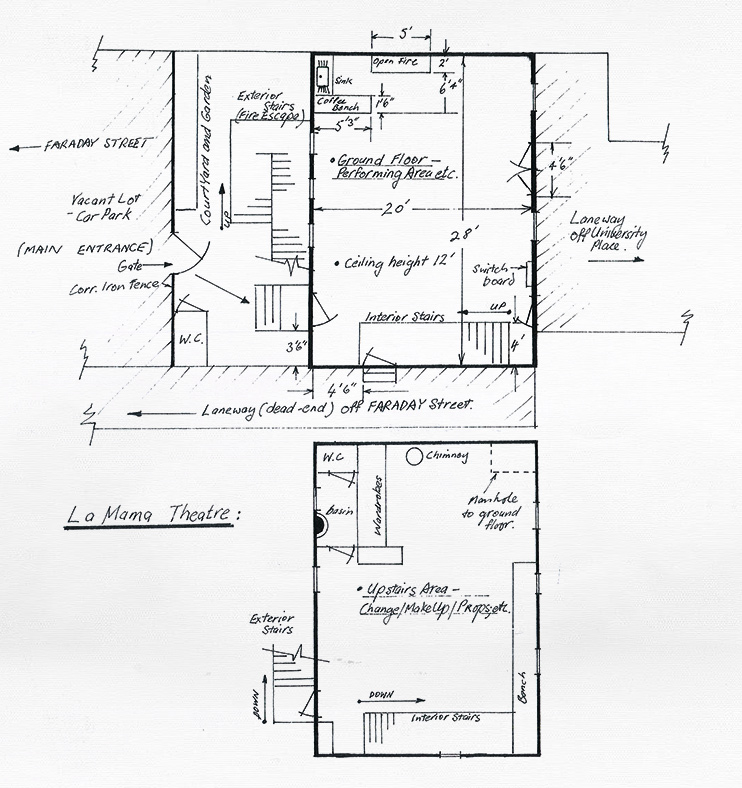
There can’t be any other theatre in Australia where that particular vibration of nervous humour could be nurtured. It must have something to do with the shape of the building.
Helen Garner, 1982
No props, no make-up, small casts, none of the traditional trappings. A direct, rough, hard-hitting theatre with the actors right there next to you, close enough to touch.
Barry Oakley, 1975
The little kitchen in the corner, like a fairy-tale kitchen, with the fire burning in the hearth. It’s like going home to Mum, archetypally, to go there.
Helen Garner, 1982
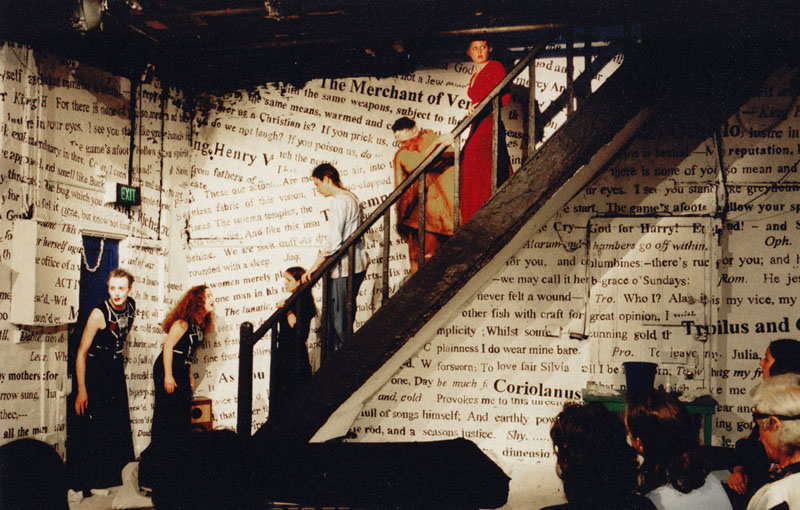
-

White with Wire Wheels by Jack Hibberd. Jon Hawkes, Graeme Blundell, Bill Garner. Photo: Lloyd Carrick Theatre and Dance Platform -

Tent by Lloyd Jones. Liz Jones Photo: Ben Benadinavitch Theatre and Dance Platform -

The Empire Builders by Boris Vian. Tina Fersterer, Rob Lyon, Glen Hunt, Annie O'Shannessy Photo: Wendy Joseph University of Melbourne Archives -

A White Sports Coat by Tes Lyssiotis. Mary Sitarenos University of Melbourne Archives -

The Woodbox. Caroline Lee and Cate Blanchett University of Melbourne Archives -

European Features by Kris Hemensley. Cate Blanchett, Elise McCredie Photo: Lyn Pool University of Melbourne Archives -

Event for Video Robot, Involuntary Arm and Third Hand by Stelarc University of Melbourne Archives -

Tanya and Kit by Harry Cripps. Sophie Lee, Sarah Chadwick University of Melbourne Archives -

Shades of Blue by Andrew Bovell. Heather Bolton Photo: Paul Gleeson University of Melbourne Archives -

The Interview by Barry Dickins. Howard Stanley, Barry McKaskell Photo: Anaesthetic Theatre and Dance Platform -

The Four Leave Clover by Lloyd Jones. Joy Dunstan Theatre and Dance Platform -

The Hunger Artist by Franz Kafka. Wayne Macauley Theatre and Dance Platform -

Pundulumura: Two trees together. Joe Dolce and Gnarnayarrahe Inmurry Waitairie Theatre and Dance Platform -

The Removalists by David Williamson. David Williamson and Paul Hampton. Photo: Jyl Gocher Theatre and Dance Platform -

Three Plays by Slawomir Mrozek. Kristof Kaczmarek, David Burnett Theatre and Dance Platform -

Of Cows, Women and War by Ajak Kwai and Bagryana Popov Photo: Dorine Blaise University of Melbourne Archives -

BlaaQ Catt by Maurial Spearim Photo: Zan Wimberley University of Melbourne Archives -

The Coming of Stork by David Williamson. Bruce Spence Photo: Lloyd Carrick Theatre and Dance Platform -

Viet Kieu by Diana Nguyen Photo: Darren Gill University of Melbourne Archives
Viva La Mama
After the fire, La Mama committed to rebuilding the Faraday Street theatre and embarked on an ambitious fundraising campaign. The campaign was successful and on Thursday 21 November 2019 the first sod was turned at a celebration to mark the beginning of reconstruction and the next chapter in the La Mama story. The renovated building, with additional rehearsal space and improved front of house amenities, is expected to be complete in early 2021. Viva La Mama!
La Mama's archive of production and administration files have been held by the University of Melbourne Archives since 1977. This collection includes photographs, posters, postcards, flyers, scripts, letters, emails, financial accounts and much more. Fortunately, although some files relating to the years between 2016 and 2018 were lost in the fire, the bulk of the archive remains intact and can be accessed by researchers through the University’s Reading Room in the Baillieu Library.
The University of Melbourne, in partnership with La Mama, is committed to digitising this significant archival resource, creating new opportunities to explore the rich history of the performing arts in Melbourne and making it accessible to a wider audience. To view digitised items in the La Mama collection visit the Theatre and Dance Platform. To view a list of the full La Mama archive visit the University of Melbourne Archives.
This interactive multimedia project was created by Rachel Fensham and Andrew Fuhrmann for the Digital Studio at University of Melbourne and Digital Heritage Australia. Our thanks to co-CEO and company manager Caitlin Dullard, archivist Fiona Wiseman and the rest of the La Mama team for their support.
















![Our Dick [2], 1972: Poster (colour print) advertising Out Dick by Tribe at La Mama. Includes performance dates](https://arts.unimelb.edu.au/__data/assets/image/0005/3505631/12.jpg)
